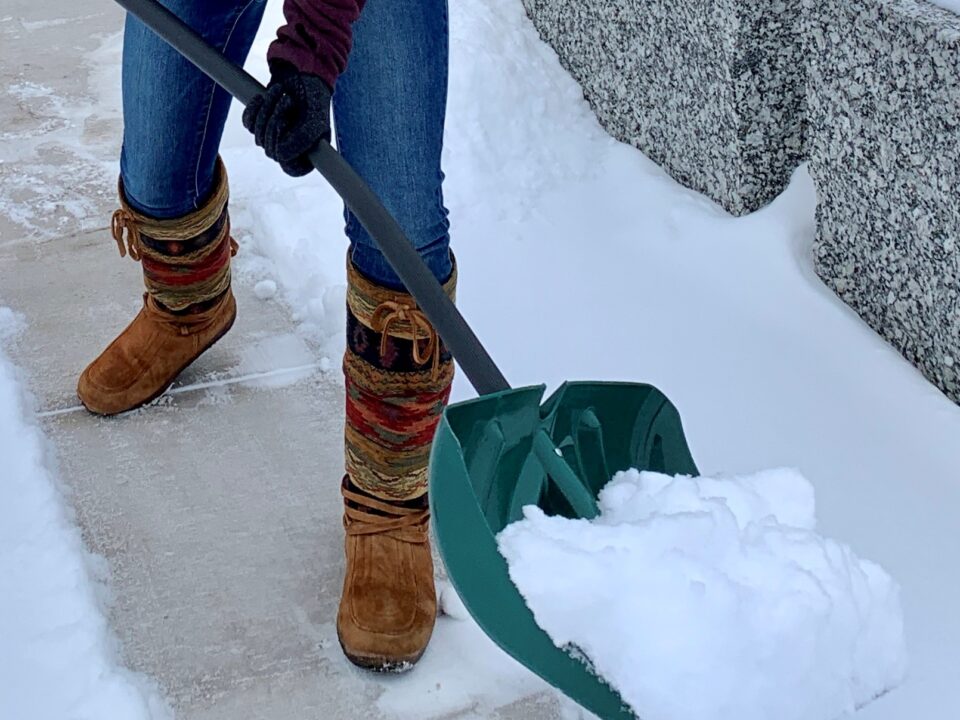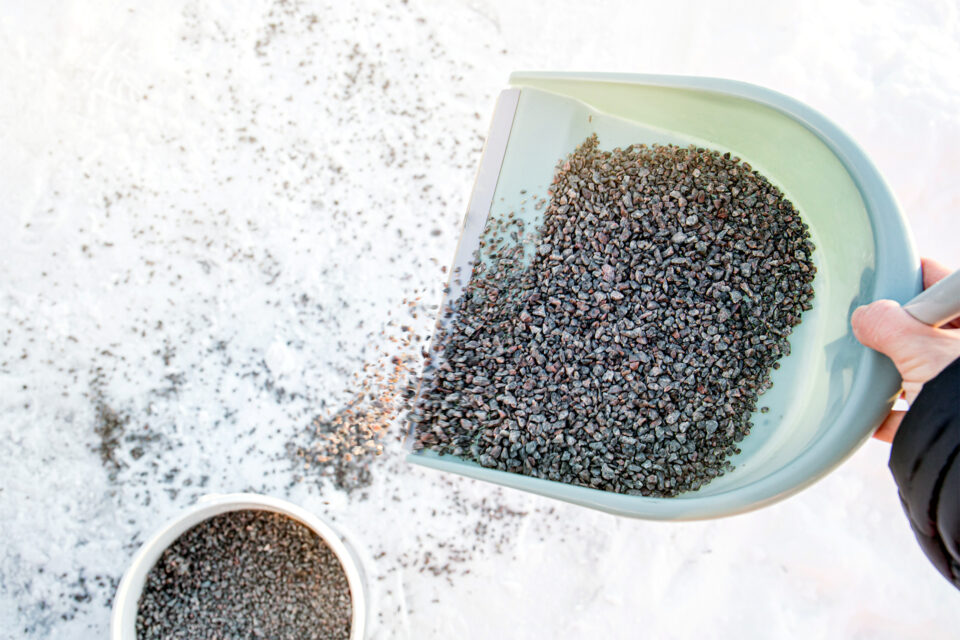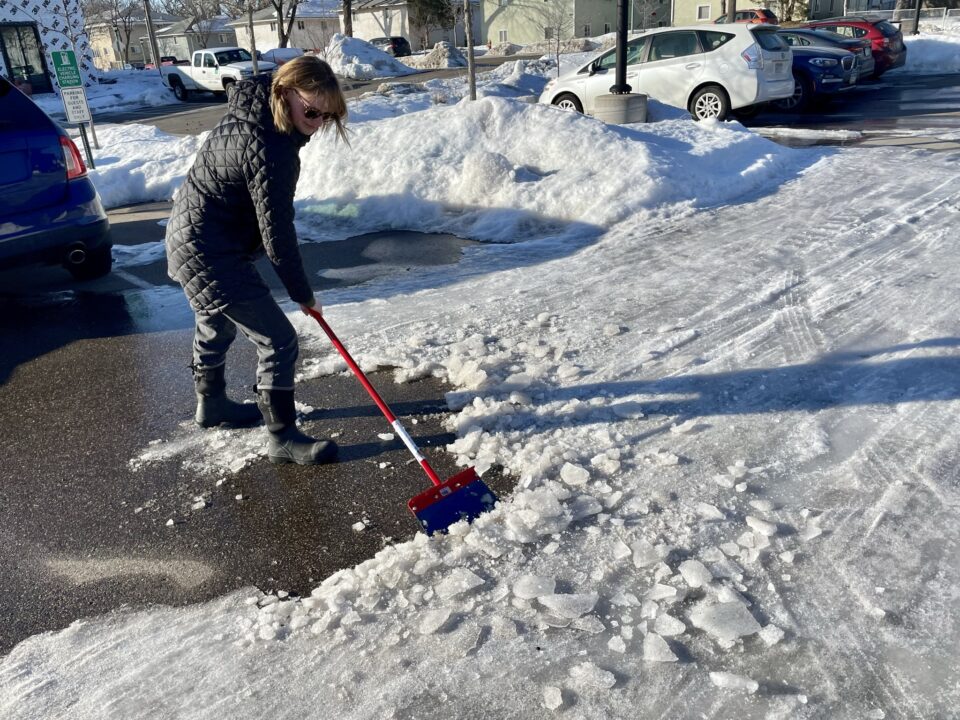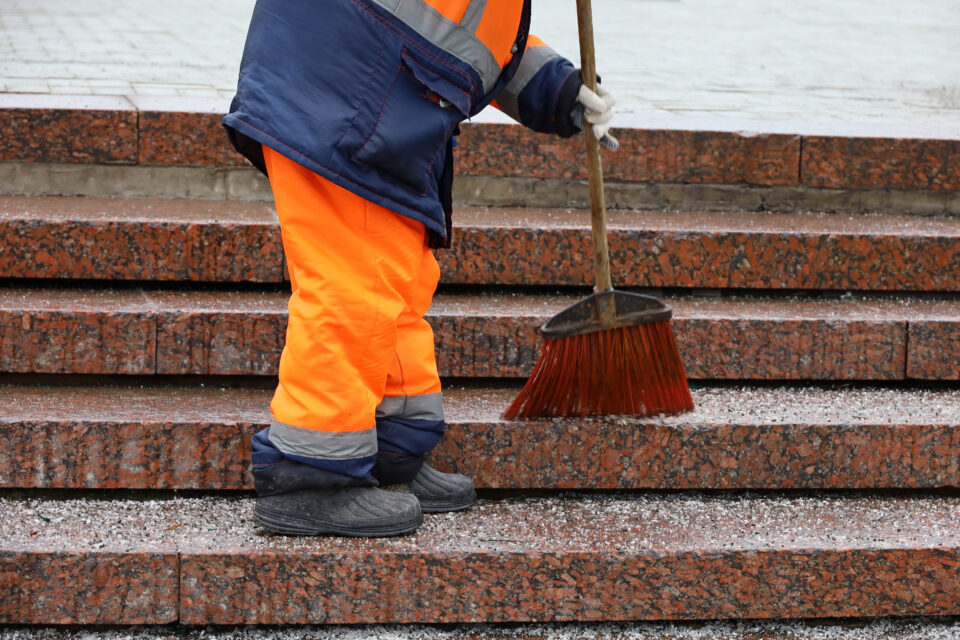Tips for Better Snow and Ice Management
Colder weather brings slippery walkways and parking lots. While salt reduces ice and can help keep us safe, it harms pets and wildlife, pollutes groundwater, lakes and the Mississippi River, and damages buildings, cars, landscaping and roadways.
Melting snow and ice carries salt into storm drains that empty into lakes, streams, and wetlands. Once the salt is dissolved in water, there is no practical way to remove it. There is no environmentally safe option for de-icer. All de-icing products cause pollution, even those labeled “eco-friendly.” Just one teaspoon of salt contaminates five gallons of water!
Public safety is the number one concern. Oversalting does NOT provide extra protection from snow and ice, but it does damage property and pollute water. Salt can also be expensive and doesn’t work well in colder temperatures.
Try chicken grit, also called cherry stone or traction grit, for icy surfaces instead of salt. It provides better traction than sand and is easier to clean up. Grit is typically less expensive than salt and can be reused. Find it at hardware stores and home centers.
We know Minnesota winters bring many different types of snow. Start preparing now by having a range of tools on hand to tackle various conditions. Remove as much snow and ice as possible before applying grit, sand or salt. An outdoor push broom, a heavy-duty snow and ice scraper, and a few types of snow shovels can make a big difference in effective snow removal.
Tips for Managing Snow and Ice
Shovel, Sweep or Scrape: Have the proper tools to clear driveways and sidewalks. Remove snow early and often to reduce compacted snow and ice.
Swap the Salt: Try using grit or sand for traction on ice instead of melting the ice with salt.
Select the Correct Product: Road salt only works when the pavement temperature is above 15 degrees. Read the label of your de-icer for usage instructions and temperature. In colder temperatures, use different products like sand or grit.
Scatter Salt Sparingly: A 12-ounce coffee cup holds enough salt to cover a 20-foot driveway or 10 sidewalk squares. Scatter salt grains 3 inches apart. Only use salt on ice! Don’t put salt on wet pavement or snow.
Save & Reuse: Sweep up grit and sand or leftover salt to reuse as needed.
Use Sunny Days: Take advantage of sunshine on pavement and work to break up lingering ice and snow with a heavy-duty snow and ice scraper or shovel.
Resources
You can learn more about salt and its human health and environmental concerns from the Minnesota Pollution Control Agency.




